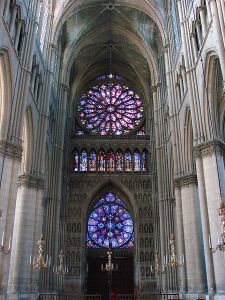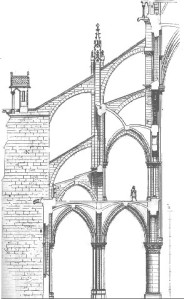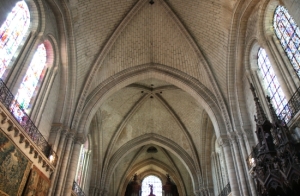This entry will be dedicated solely to the purpose of identifying the specific features of Gothic architecture. As stated in my first post, cathedrals are terribly skeletal, and the main reason why they are lies in a good support system, because the “bones” allow pressure to travel down certain places to the ground while avoiding others. Without a skeleton, the architects could never have put in the windows that distinguish Gothic architecture. The glass simply can’t support the weight; they would collapse immediately. Below are various pictures going more into depth into the anatomy of the cathedral:

Rose Window. These large, artistic windows are found in virtually all models of Gothic architecture. Note also the stained glass.Pointed WindowsRibbed Vaults

Flying Buttress. These support systems allowed for architects to build the thin, tall, and heavy walls of the cathedrals. The pressure the buttresses exert on the outside of the structure counteract the weight and pressure of the massive ceilings, thus preventing devastating collapse. There is a trick though: the buttresses must be put in exactly the right place, or else it won't be able to direct exert pressure on the opposite force, and over time cracks will form.

